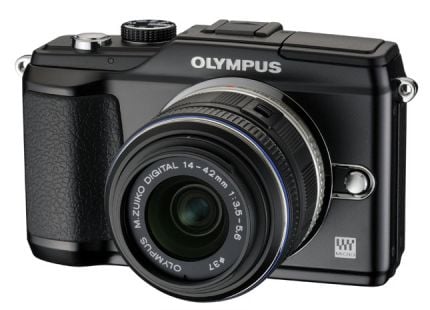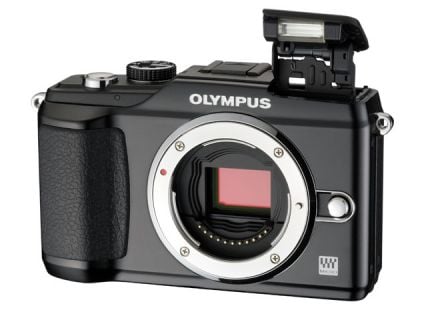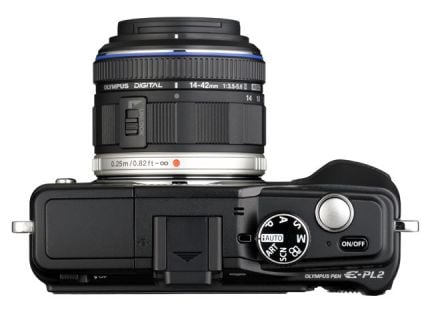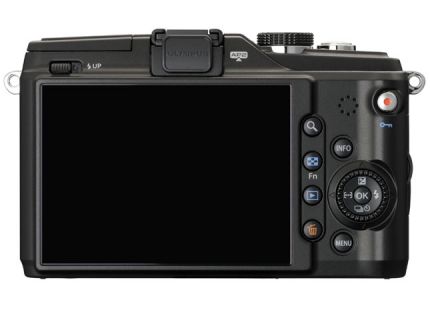- HubPages»
- Technology»
- Consumer Electronics & Personal Gadgets»
- Portable Electronics
Olympus PEN E-PL2 Four/Thirds Camera
Who is Olympus?
Olympus is a Japanese optics company founded in 1919. It was originally formed to make microscopes and thermometers.
Olympus Corporation has a very long history as a camera maker. It's first design was the Semi-Olympus I in 1936. But the first truly groundbreaking design was the PEN series. This series was introduced in 1959.
With a half-frame format, the camera could allow seventy-two pictures on a standard thirty-six exposure roll of thirty-five millimeter film. This made the PEN series both compact and portable at a time when most 35mm cameras weighed pounds and were bulky to carry around.
Yoshihisa Maitani, designed the PEN series as direct competitors to both Canon and Nikon. He also designed the OM system. The OM system introduced a new technology in film cameras by offering features like off-the-film light metering and off-the-film flash monitoring. The OMs were also smaller and lighter than models offered by Canon and Nikon.

The PEN Series
The PEN series of cameras have always been designed to be smaller and lighter while providing the same photographic quality of larger cameras.
Olympus introduced the first digital PEN in 2009 with the PEN E P1. The new digital PEN series cameras are what are referred to as four thirds cameras. A specification that both Kodak and Olympus created.
Four thirds cameras share the same lens mounting system of all other four thirds cameras meaning that any manufacturers four thirds lens should fit any other manufacturers four thirds camera. Four thirds cameras are also designed to be solely digital with no film equivalents made.
The new PEN E-PL2 described below is micro four thirds (a standard created by Panasonic and Olympus) which does away with the single lens reflex (SLR) mirror and pentaprism viewfinder system. This means that the cameras that adhere to the micro four thirds standards can share lenses and are even smaller and lighter than their SLR cousins.
The PEN E-PL2 is no exception.






The PEN E-PL2
This is really an entry level point-and-shoot camera with DSLR attributes.
It adheres to the Micro Four Thirds System (MFTS) standard, yet has a very large array of built-in functions that are there to enhance creativity, boost performance, and ensure ease of use during operation.
Main Features
The camera is deigned, from the beginning, to make it easy for anyone, novice to expert, to take advantage of the camera's SLR like features.
Built-in to the camera is the "New Live Guide" (NLG) interface which guides the photographer through the picture taking process.
All the photographer has to do is follow the instructions provided by the NLG. By following these instructions they will take pictures that turn out precisely as desired. The camera will automatically set image brightness, hue and background defocusing with the twist of a dial. Because the camera also shoots video NLG can assist in this as well.
The camera features built-in Art Filters allowing the photographer to set moods and effects while shooting.There are six art filter effects and these can be applied to still and motion capture images as well.
Despite it's small size the E-PL2 has an accessory port which allows an electronic viewfinder to be attached (the VF-2), a stereo microphone set, and what Olympus calls the Communication unit (MAL-1)
The photographer can uses custom lenses with the E-PL2 with optional fish-eye, wide-format, and macro converter. When a lens attachment is added the camera automatically presents the photographer with menu selection for that lens; including angle of view.
Camera Functions
Camera functions have been improved such as eye-detection (so improve face recognition) and a more effective red-eye reduction with a flash that rises well above the camera body (see photo two)
Images and focusing have been improved with a very large three inch diagonal four hundred sixty thousand pixel LCD monitor. The main control dial can be used for quick exposure compensation during shooting or for frame advance during picture playback. A movie button switches the camera instantly to motion capture (HD format) even if the camera dial is not set to movie mode.
The CCD image sensor is a 1 1/3-inch 12.3-megapixel High Speed Live MOS Sensor.
Pricing
The Olympus Website lists the PEN E-PL2 at $599.99, but Amazon is already listing it at at least 5% off of that price. Buy.com is listing it at an even 10% off of the Olympus price and Ritz Camera for full retail (though a link declares that they were selling it for $549.00 when clicked that link lists the camera at full price).
For a full list of specifications see the table below.
Olympus E PL-2
| |
|---|---|
Model
| 26901
|
Optical Sensor Resolution
| 12.3
|
Optical Sensor Technology
| High Speed MOS
|
Optical zoom
| 3X
|
Maximum Aperture Range
| F3.5 ~ 5.6
|
Minimum focal length
| 14 millimeters
|
Maximum focal length
| 42 millimeters
|
Lens Type
| zoom
|
Optical Sensor Size
| 13.0 x 17.3 mm
|
Included Flash Type
| pop up
|
Display Size
| 3 inches
|
Light Sensitivity
| 200 ~ 6400
|
Image types
| JPEG RAW
|
Shooting Modes
| Frame Movie Mode
|
Exposure Control Type:
| Candle, document, high key Candle
|
Document, High key, Anti shake, Low key
| |
Landscape, Portrait mode, Nature macro
| |
E-portrait, Fisheye converter, Wide converter
| |
Macro converter, Macro, Beach/snow
| |
Night portrait, Landscape-portrait, Children
| |
Fireworks, Panorama assist, Night scene
| |
Sports mode, Sunset
| |
Width: 4.5 inches
| 4.5 inches
|
Depth: 1.7 inches
| 1.7 inches
|
Height: 2.9 inches
| 2.9 inches
|
Weight: 11.2 Ounces
| 11.2 ounces
|
Coda
This is not really a point and shoot, but more a serious hobbyist camera with novice features. It is currently available on Amazon for about $700.00.
About the only thing I can find fault with this camera is the pop-up flash. Though the idea of moving the flash out of the plane of the lens is a good one, the mechanism to elevate it looks like an accordion arrangement which means that it might be fairly easy to break.
Disclaimer
The author was not compensated in any way, monetarily, with discounts, or freebies by any of the companies mentioned.
Though the author does make a small profit for the word count of this article none of that comes directly from the manufacturers mentioned. The author also stands to make a small profit from advertising attached to this article.
The author has no control over either the advertising or the contents of those ads.










